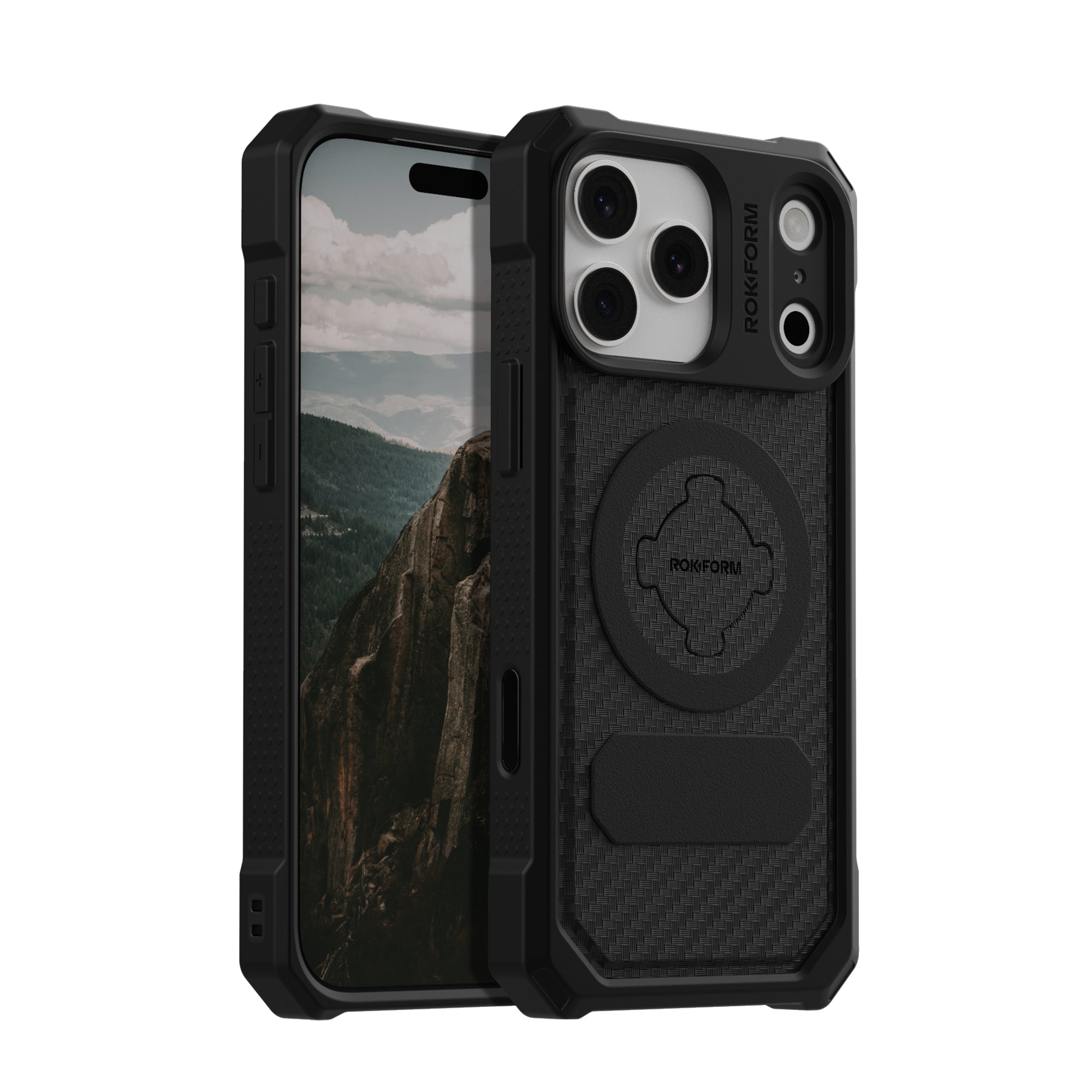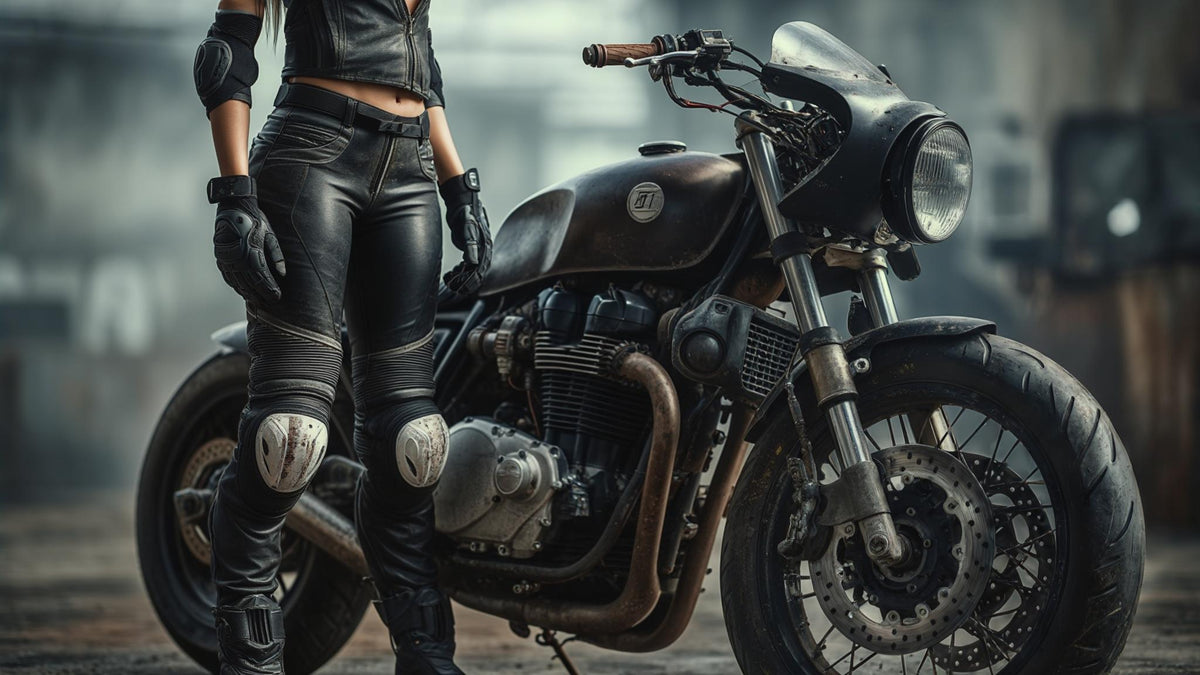Here's something that'll blow your mind - one-third of all motorcycle crashes result in injuries to the foot and leg areas, with half of those involving fractures to lower leg bones, according to the U.S. Highway Traffic Safety Authority. Pretty scary stuff, right? But here's the cool part: this reality has pushed boot makers to create some seriously smart tech that's transforming basic protective gear into systems that might actually be smarter than your smartphone (and probably have better battery life too).
Table of Contents
The Hidden Science Behind Your Feet and Your Bike
Materials That Actually Fight Back Against Road Rash
When Your Boots Start Talking to Your Phone
Street Boots: Protection That Doesn't Look Like Armor
Motorcycle Shoes: Maximum Safety in Minimal Package
Why Your Riding Experience Depends on What's Below Your Ankles
Final Thoughts
TL;DR
Modern motorcycle boots use some pretty wild engineering to improve your control precision by up to 23% through better foot positioning and feedback
New materials like carbon fiber microweave and self-repairing coatings provide stronger protection while weighing less than your old clunky boots
Smart boots now include crash detection sensors that can automatically call for help when you need it most (seriously, we're living in the future)
Street boots hide motorcycle-grade protection inside footwear that looks professional enough for client meetings
Motorcycle shoes prove you don't need ankle-high coverage to get real protection for city riding
Temperature-responsive materials keep your feet comfortable whether you're sweating in traffic or freezing on mountain passes
The Hidden Science Behind Your Feet and Your Bike
I know, I know - talking about boot science sounds about as exciting as watching paint dry, but stick with me here. Most riders think motorcycle riding boots are just about protection, but there's actually some pretty cool science going on between your boots and your bike. The way your boots interact with your body affects everything from how smoothly you can work the clutch to whether your lower back is screaming after a long ride.
This completely changed how I think about choosing gear. Every time you shift or brake, your biker boots are part of a chain reaction that travels up through your entire body. Modern boot designers have figured out how to work with this natural system instead of fighting against it, creating gear that actually makes you a better rider while keeping you more comfortable.
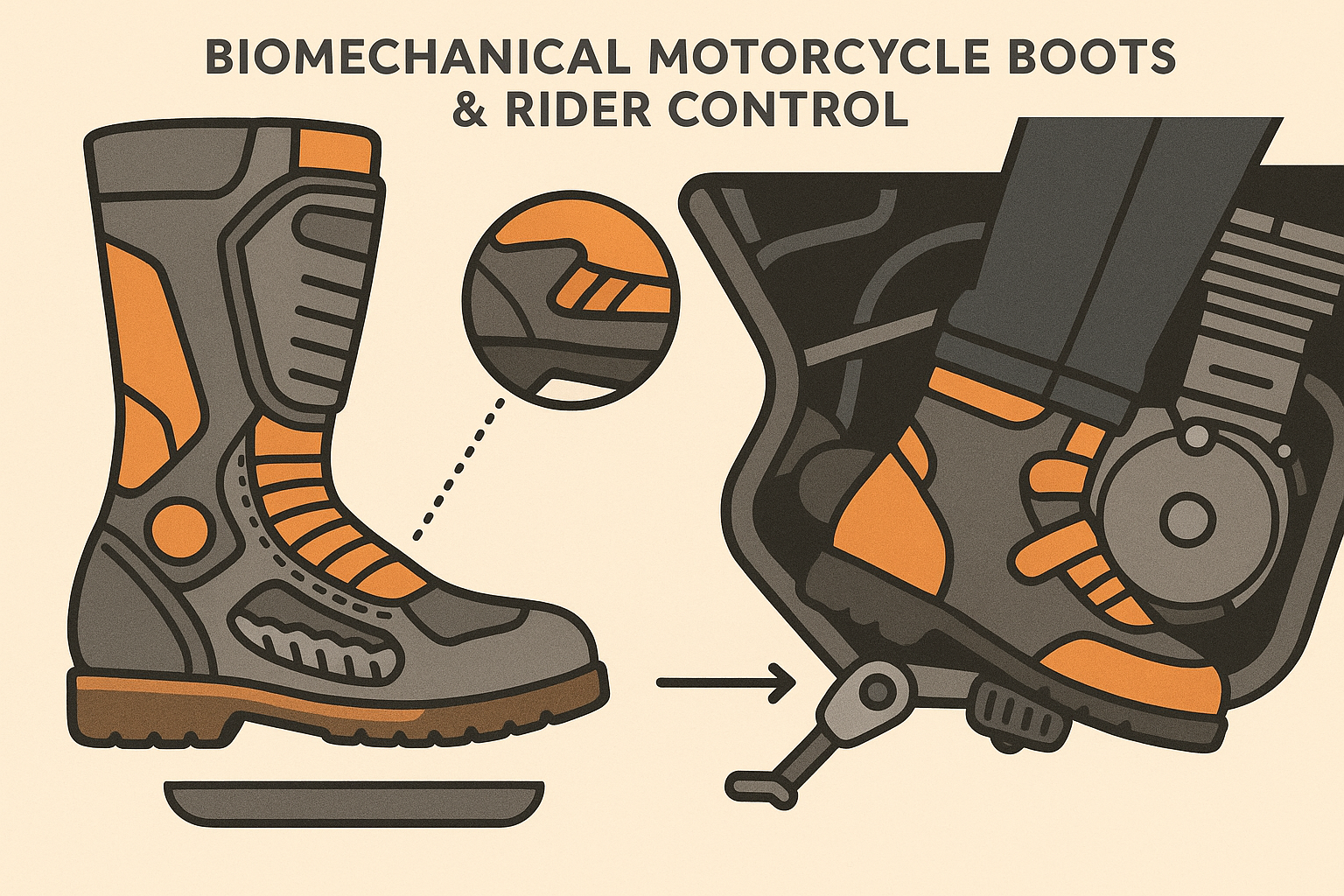
Your Body's Secret Communication Network Through Boot Design
The texture and thickness of your boot's insole isn't random - it's carefully designed to help your body understand exactly where your foot is positioned. This helps you feel precisely where your foot is on the peg or brake, improving your control in ways you can actually measure.
I never realized how much my old biker boots were actually working against me until I tried a pair with proper feedback design. The difference in clutch control was immediate - suddenly I could feel exactly how much pressure I was applying without having to think about it. My boots became an extension of my nervous system rather than just protective gear that happened to be on my feet.
Studies have shown that motorcycle riding boots created for motorcycle use can provide "up to 10 times as much foot protection as regular shoes" according to MotorcycleID's comprehensive analysis of motorcycle boot safety standards. For riders seeking the ultimate in protection and functionality, understanding the best motorcycle accessories becomes crucial when building a complete riding gear system.
How Your Boots Train Your Brain for Better Control
Here's something most people don't realize - those rigid biker boots that feel "protective" might actually be limiting your natural ankle movement in ways that create fatigue and mess with your control. Think of it like this: your boot should bend where your ankle naturally wants to move, but if something tries to crush your foot, it suddenly becomes rock-hard.
The engineering behind this is fascinating (and honestly pretty complex). Different materials are strategically placed so your ankle can move naturally when you're walking around at your destination, but the protection kicks in exactly when impact forces get dangerous.
Consider the difference between a traditional steel-toed work boot and a modern motorcycle boot with smart flex zones. The work boot might protect against a dropped wrench, but good luck trying to feel your clutch engagement during a spirited ride through mountain curves.
A good progressive flex boot lets you feel every nuance of the clutch while still protecting against impact forces that exceed 337 pounds of pressure - that's the CE Level 2 standard. Your biker boots become partners in the riding process rather than obstacles you have to work around.
Why Flexible Protection Beats Rigid Every Time
Advanced sole designs don't just cushion your feet - they're designed to channel impact forces through your body's natural structure. This isn't just about comfort; it's about preventing the kind of fatigue that leads to accidents during long rides.
When I first heard about this stuff, I was skeptical. How much difference could sole design really make? Then I spent eight hours riding through the mountains in boots with proper engineering. My feet felt fresh at the end of the day, and for the first time after a long ride, my lower back didn't feel like I'd been hit by a truck.
The physics involved are actually quite sophisticated. Your biker boots need to absorb initial impact, spread forces across your foot's natural arch, and then transfer remaining energy up through your leg bones in ways that work with your body's design rather than against it.
Temperature Control That Actually Adapts to Your Ride
Forget simple ventilation holes - we're talking about materials that actively respond to changing conditions. Some biker boots now include materials that absorb excess heat when your feet get too warm and release it back when temperatures drop, maintaining consistent comfort throughout your ride.
I was skeptical about this technology until I experienced it during a ride that went from hot desert highways to cool mountain passes. My feet stayed comfortable the entire time without any adjustment on my part. It's like having a personal climate control system built into your boots.
Strategic placement of different materials creates distinct temperature zones within modern biker boots. Your forefoot might need cooling while your ankle area needs warmth - and advanced designs can provide both simultaneously through different climate zones.
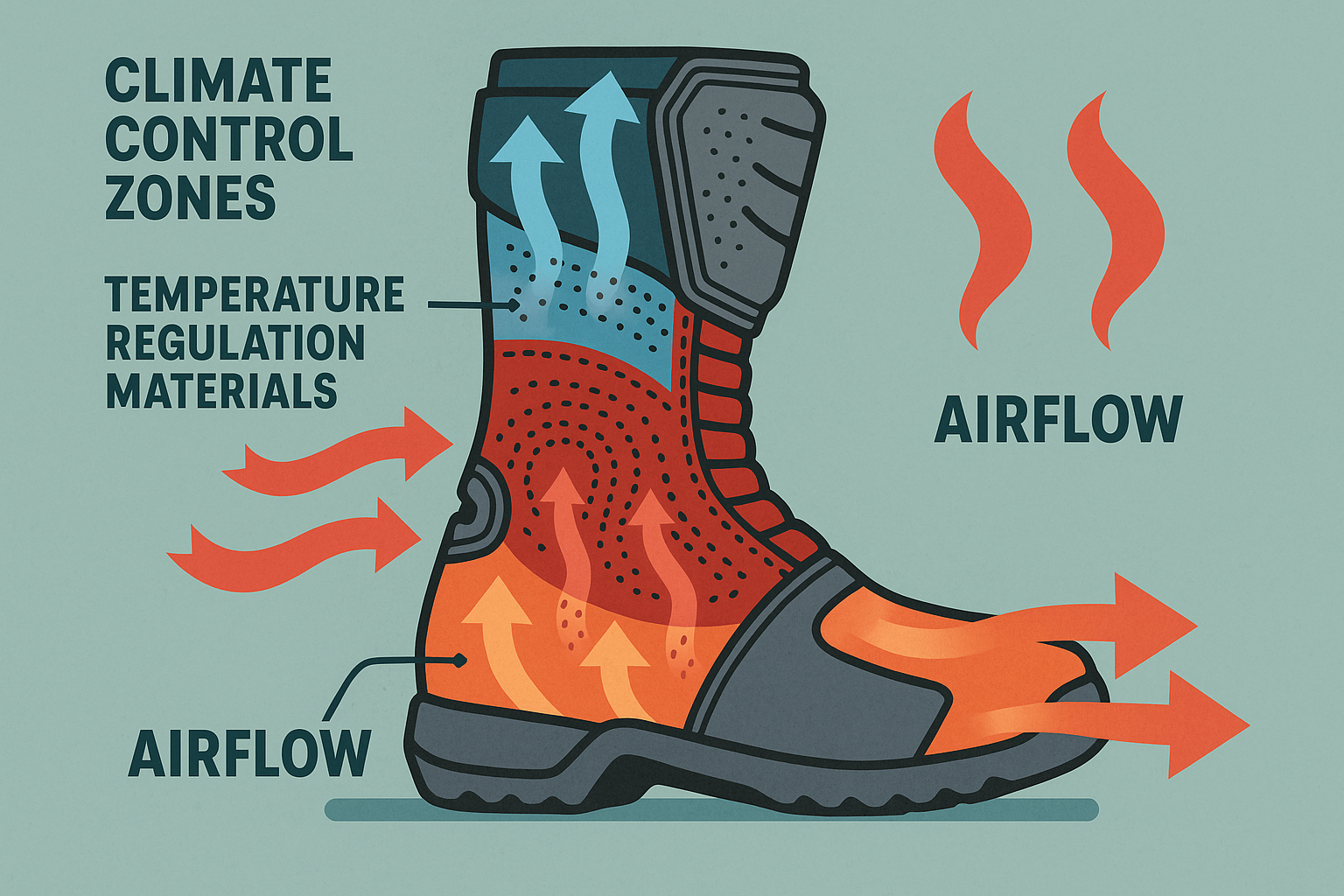
The Psychology of Confidence: How Boot Design Affects Your Mind
Here's something interesting - when your motorcycle riding boots feel "connected" to your bike and you trust your protection, your reaction times actually improve and you make fewer anxiety-induced errors. This isn't just comfort - it's actual safety enhancement because you're in a better mental state.
The thickness and material of your boot sole directly affects how much feedback you get from foot pegs. This communication influences your subconscious understanding of what your bike is doing in ways most riders never think about. Too thick, and you lose the subtle feedback that helps you understand your machine. Too thin, and discomfort becomes a major distraction.
Getting this balance right is crucial for both performance and safety. Your biker boots need to provide enough protection to give you confidence while maintaining enough sensitivity to keep you connected to your bike.
Boot Sole Thickness |
What You Feel |
Your Feet Will Thank You |
Perfect For |
|---|---|---|---|
Ultra-thin (2-4mm) |
Everything |
Not really |
Track racing, short rides |
Thin (4-6mm) |
Most things |
Somewhat |
Sport riding, canyon runs |
Medium (6-8mm) |
Just right |
Absolutely |
Daily commuting, touring |
Thick (8-12mm) |
Less detail |
Maximum comfort |
Adventure riding, standing |
Ultra-thick (12mm+) |
Very little |
Depends |
Off-road, extreme conditions |
Materials That Actually Fight Back Against Road Rash
The materials revolution in motorcycle boots men's footwear goes way beyond traditional leather and basic armor. I've been amazed to learn about aerospace-grade materials and manufacturing techniques that provide protection levels that were impossible just a few years ago, all while making biker boots lighter and more comfortable than ever before.
Instead of always being rigid and heavy, these new materials use microscopic engineering to be flexible during normal use but become incredibly strong the moment they detect impact forces. It's like having armor that's smart enough to know when to activate.
Protection That Gets Stronger When You Need It Most
Carbon fiber microweave technology creates protection that feels almost fabric-like during normal movement but becomes rigid only when hit. This means you get normal mobility until the exact moment protection is needed - it's armor that knows when to wake up.
The first time I bent down to tie my shoes in biker boots with this technology, I was shocked at how flexible they felt. Then I read the impact test results and realized I was wearing some of the strongest protection available. These smart materials can "remember" their original shape after impact, ensuring consistent protection through multiple minor incidents.
Unlike traditional foam that gets worse with each hit, these materials maintain their protective properties over time. Some advanced coatings can automatically heal minor scratches and abrasions, maintaining both appearance and protection longer than traditional materials. This isn't just about looking good - surface damage can compromise protection, so self-repairing coatings actually make you safer.
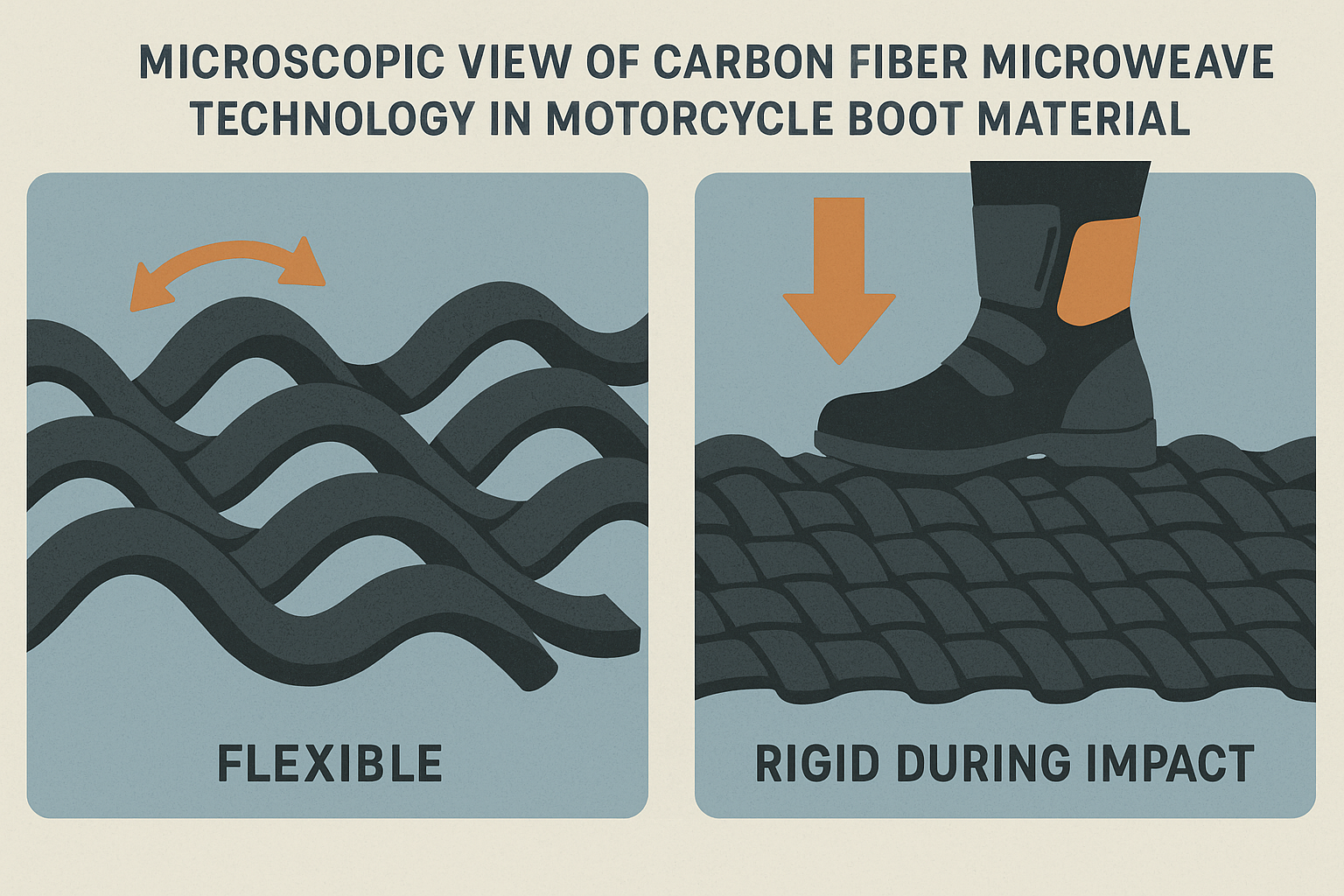
Boots That Adapt to Weather Before You Do
Modern motorcycle riding boots actively respond to environmental conditions, adjusting their protective and comfort characteristics based on temperature, humidity, and precipitation. This goes way beyond simple waterproofing into active environmental management.
New waterproofing systems don't just keep water out - they actively manage moisture transfer based on what's happening inside versus outside your boots. Your boots can actually decide when to let moisture out and when to keep it in. Recent testing by "Motorcycle News found that CE Level 2 rated boots can withstand 12 seconds of contact with abrasion testing" compared to just 5 seconds for Level 1 certification, demonstrating the significant advancement in material durability.
Temperature-responsive insulation materials expand or contract based on ambient temperature, providing optimal thermal regulation without adding bulk. This means your motorcycle riding boots automatically adjust their insulation properties as conditions change throughout your ride.
Picture this: you're riding from a chilly morning start in the mountains (45°F) to a desert afternoon (95°F). Traditional boots would leave you freezing at dawn or overheating by noon. Temperature-responsive insulation automatically contracts during the cold morning, reducing bulk and increasing warmth retention, then expands during the hot afternoon to create more air circulation and cooling. Your feet maintain the same comfortable temperature throughout a 50-degree temperature swing without you doing anything.
For riders who want to protect their essential gear beyond just their feet, understanding motorcycle maintenance becomes equally important for overall safety and performance.
When Your Boots Start Talking to Your Phone
Okay, this is where things get really wild. The intersection of motorcycle riding boots with digital technology is creating safety and performance opportunities that most riders haven't even considered yet. I'm talking about invisible sensors, crash detection systems, and connectivity features that could literally save your life while making you a better rider.
Your boots can now monitor everything from impact forces to how you walk, providing data that improves both immediate safety and long-term health outcomes. These systems work completely in the background, gathering information that could prevent accidents or speed up emergency response.
Invisible Sensors That Watch Over Your Safety
Advanced sensors can detect crash scenarios and automatically trigger emergency protocols, potentially saving critical minutes in remote riding areas. When every second counts after an accident, having your motorcycle riding boots automatically call for help could make the difference between life and death.
I ride in some pretty remote areas, and knowing that my boots could summon help even if I'm unconscious gives me confidence to explore places I might otherwise avoid. Continuous monitoring of how you interact with your motorcycle reveals patterns that can prevent fatigue-related accidents and improve riding technique. This data shows you things about your riding that you'd never notice on your own.
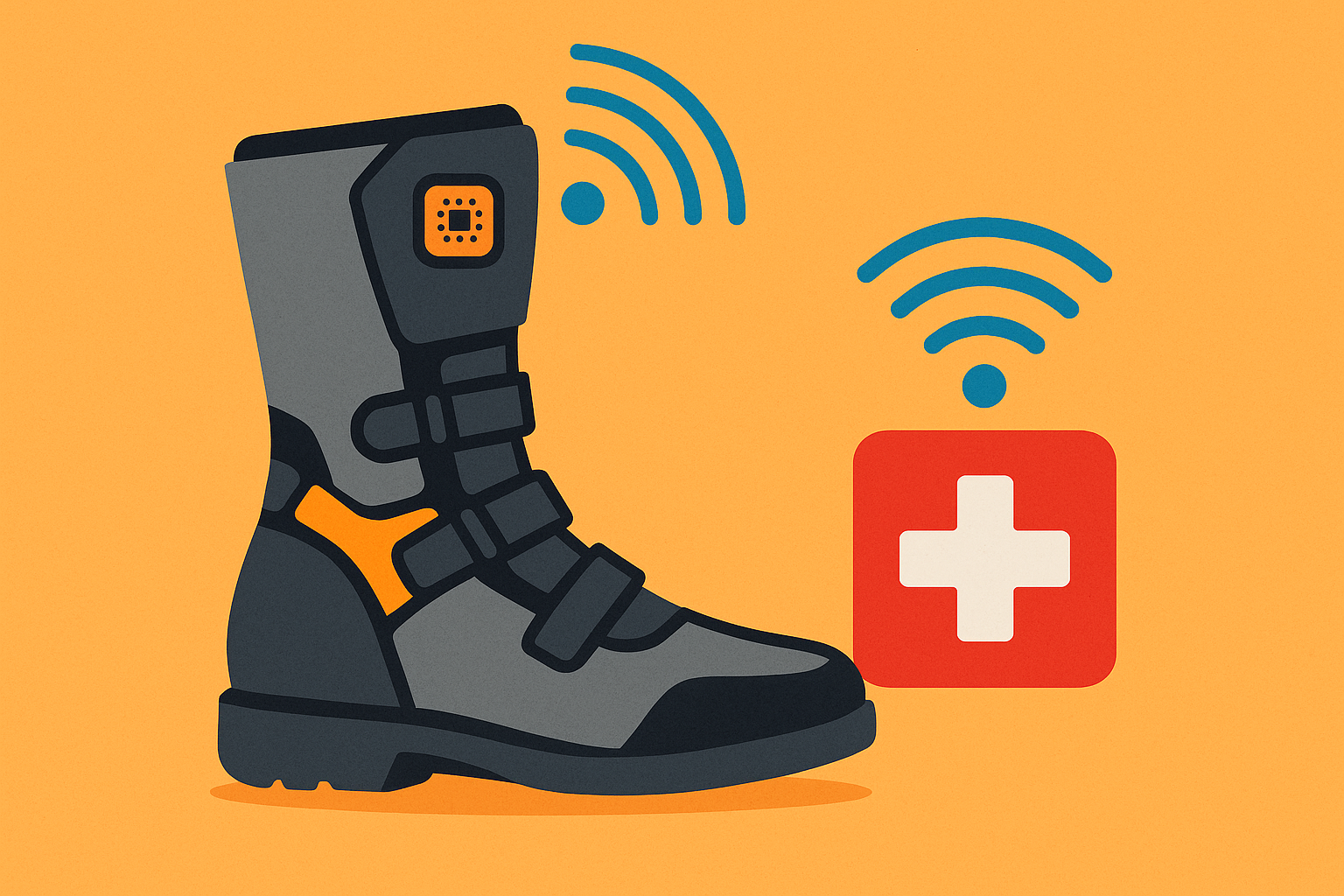
Your Boots as Part of Your Connected Gear System
Modern boots are becoming platforms for connecting with other riding gear and vehicle systems, creating a more integrated and safer riding experience. Instead of individual pieces of gear, you're building an interconnected safety and comfort system.
Integration with bike systems or smartphone apps allows for precise temperature control based on riding conditions and personal preferences. Your biker boots can learn when you typically get cold and start warming up before you even notice the temperature drop. How cool is that - your boots could start heating up automatically when your GPS shows you're entering a mountain pass where the temperature typically drops?
As noted by industry expert Sean Galaway, who tested boots across "over 10,000 km across the Trans European Trail" for GearJunkie, the integration of smart features with traditional protection is becoming essential for serious adventure riders. For those planning extended motorcycle adventures, checking out the best adventure motorcycle guide can help match your footwear choice with your bike selection.
Street Boots: Protection That Doesn't Look Like Armor
Street boots are the fastest-growing segment in motorcycle footwear, and I totally get why. These boots achieve full motorcycle-level protection while looking professional enough for business meetings. For riders who need to transition seamlessly between riding and professional environments, street boots solve a problem that traditional motorcycle boots men's gear never addressed.
The engineering challenge is incredible - how do you hide ankle protection plates and abrasion-resistant materials inside something that looks like a regular boot? Street boots pull this off through hidden armor and reinforcement systems that maintain the look of regular footwear.
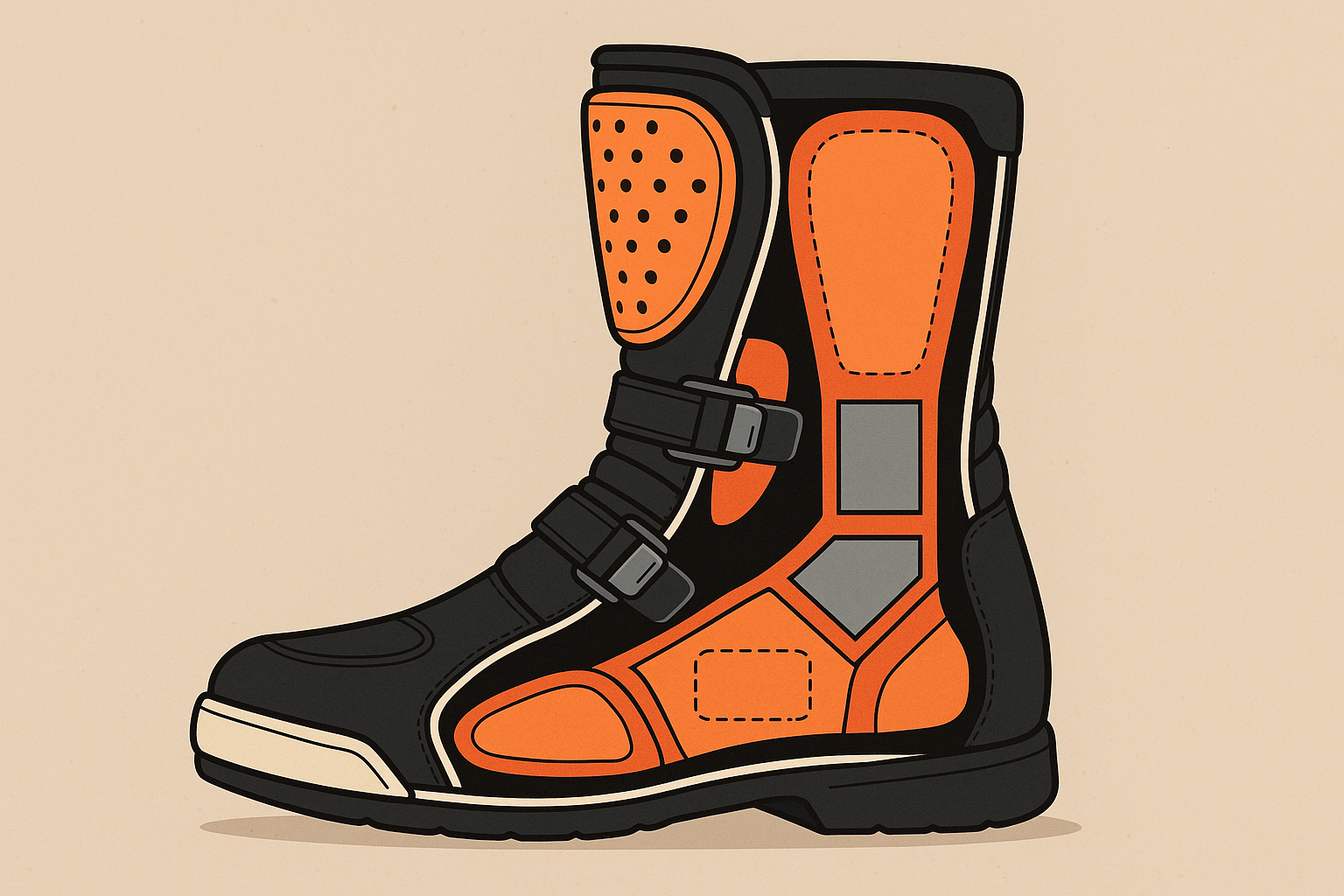
The Art of Invisible Protection
Ankle protection plates are shaped and positioned to look like natural boot structure lines, making safety features completely undetectable. Unless someone knows exactly what to look for, they'll never realize you're wearing motorcycle gear. I've worn street boots to client meetings where motorcycle gear would have been completely inappropriate. Nobody had any idea I'd just ridden my bike to get there.
Professional environment compatibility means sole designs that don't leave marks on floors and upper materials that pass business casual dress codes while maintaining abrasion resistance. You can walk into any office, restaurant, or social situation without looking out of place.
Here's a detail most people don't think about - sound management. These boots eliminate the distinctive "clunking" sound of traditional motorcycle boots when walking on hard surfaces. This might seem minor, but it's huge for maintaining the illusion that you're wearing regular footwear.
Street Boot Feature |
Traditional Boots |
Street Boots |
Professional Acceptance |
|---|---|---|---|
Ankle Protection |
Obvious armor plates |
Hidden reinforcement |
✓ Office appropriate |
Sound Level |
Loud clunking |
Silent walking |
✓ Meeting friendly |
Sole Design |
Aggressive tread |
Clean, minimal |
✓ No floor marking |
Appearance |
Obviously motorcycle |
Business casual |
✓ Dress code compliant |
Weight |
3-4 lbs |
2-2.5 lbs |
✓ All-day comfort |
Quick-Change Systems for Real-World Flexibility
Advanced systems allow riders to quickly adapt their footwear for different phases of their journey without carrying additional shoes. Some street boots include modular systems that can be adjusted based on whether you're riding or walking.
Height adjustment systems allow ankle coverage modification for different riding positions or walking comfort preferences. You might want full ankle coverage while riding but prefer a lower profile when walking around your destination. Armor systems that can be removed for situations requiring metal detectors or maximum walking comfort give you flexibility that traditional motorcycle boots can't match.
Airport security, certain venues, or just maximum walking comfort - you have options that weren't available before street boot technology evolved to this level.
Motorcycle Shoes: Maximum Safety in Minimal Package
Motorcycle shoes challenge everything I thought I knew about protection by maximizing safety within footwear that looks and feels like regular sneakers or casual shoes. The engineering required to achieve meaningful protection in such a minimal format is honestly impressive, and the results are perfect for urban riding and warm weather conditions.
Instead of concentrated armor plates, motorcycle shoes use networks of smaller protective elements that flex with foot movement while still providing coverage where you need it most. Achieving real protection in this format requires completely revolutionary approaches to material placement and impact management.
Rethinking Protection Through Distributed Design
Instead of big, clunky armor plates, these shoes spread protection across multiple smaller elements. This allows your foot to move naturally while still keeping you safe - proving that protection doesn't always require looking like a robot.
The first time I tried on motorcycle shoes, I was amazed at how normal they felt. Then I looked at the protection ratings and realized I wasn't giving up nearly as much safety as I expected. The sole compounds are specifically formulated for motorcycle foot peg contact while maintaining walking comfort and durability. These motorcycle shoes have to work perfectly in both environments without compromise.
Picture this: a rider wearing motorcycle shoes can confidently navigate a slippery parking garage in the morning, maintain perfect peg grip during spirited canyon riding at midday, then walk comfortably through a restaurant for dinner - all without changing footwear. The specialized sole compound adapts to different surface textures and grip requirements automatically.
Climate Management in Minimal Coverage
With less material coverage, motorcycle shoes have to be way more sophisticated in managing temperature and moisture. Every square inch of material has to work harder to provide comfort and protection, leading to some pretty innovative solutions.
Advanced wicking systems prevent sweat buildup during intense riding while maintaining protection integrity. When you have less material to work with, moisture management becomes even more critical for comfort and safety. Are you starting to see how much engineering goes into what looks like a simple shoe? The technology packed into these minimal designs is actually more advanced than many traditional boots.
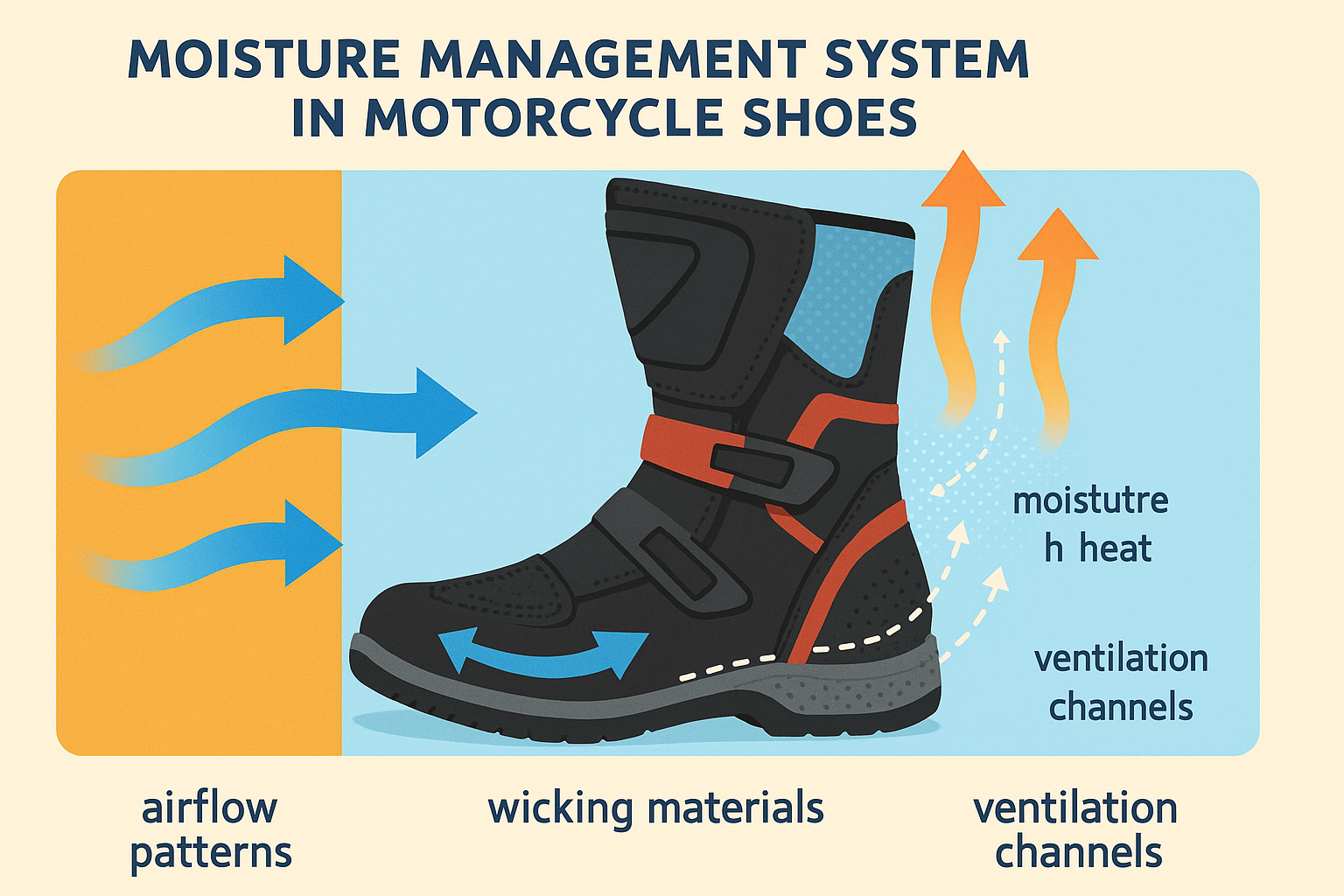
Why Your Riding Experience Depends on What's Below Your Ankles
After diving deep into all this technology and innovation, I've realized that your choice of motorcycle footwear affects your riding experience in ways that go far beyond basic protection. The right motorcycle riding boots for men can make you a more confident rider, reduce fatigue, improve your control precision, and even keep you safer through better biomechanics and emergency technology. Your feet are your primary connection point with your motorcycle, and treating them as such changes everything about how you approach gear selection.
Essential Boot Selection Checklist
Before you drop cash on your next pair of motorcycle boots, use this checklist:
Protection Requirements:
CE Level 2 certification for maximum safety
Ankle impact protection (IPA rating)
Shin impact protection (IPS rating)
Abrasion resistance rating of 12+ seconds
Crush protection minimum 337 lbs (Level 2)
Comfort Features:
Proper sole thickness for your riding style
Temperature regulation system
Moisture wicking capability
Flexible zones for natural movement
Comfortable walking capability
Technology Integration:
Smart connectivity options (if you want to live in the future)
Crash detection sensors
Temperature control systems
Better feedback for control enhancement
Real-World Considerations:
Professional appearance (for street boots)
Easy on/off mechanism
Waterproof rating (WR certification)
Fuel oil resistance (FO rating)
Slip resistance (SRA/SRB/SRC rating)
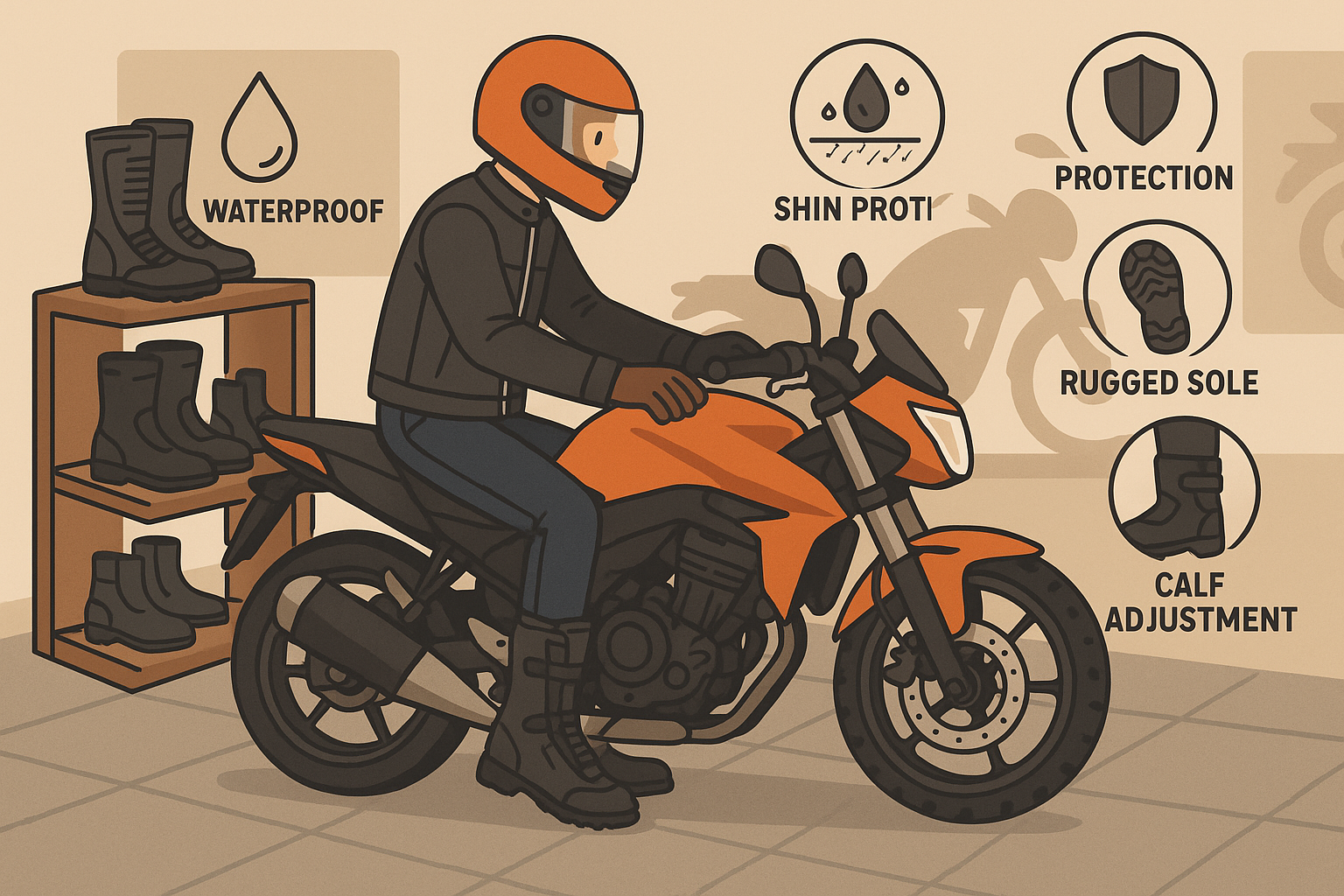
Your smartphone is probably one of your most important safety tools while riding - for navigation, emergency communication, and staying connected. Just as your boots need to protect while maintaining functionality, your phone needs protection that doesn't interfere with its capabilities. That's where Rokform comes in with motorcycle phone mounts and mounting systems designed specifically for active lifestyles.
Rokform's rugged phone cases provide military-grade protection while maintaining full access to all your device's features. Their motorcycle-specific mounting systems keep your phone secure and accessible during rides, which becomes even more important as motorcycle boots start incorporating crash detection and emergency response features that need to communicate with your device.
Ready to protect your most essential riding companion? Check out Rokform's motorcycle mounts and cases designed to handle whatever the road throws at you.
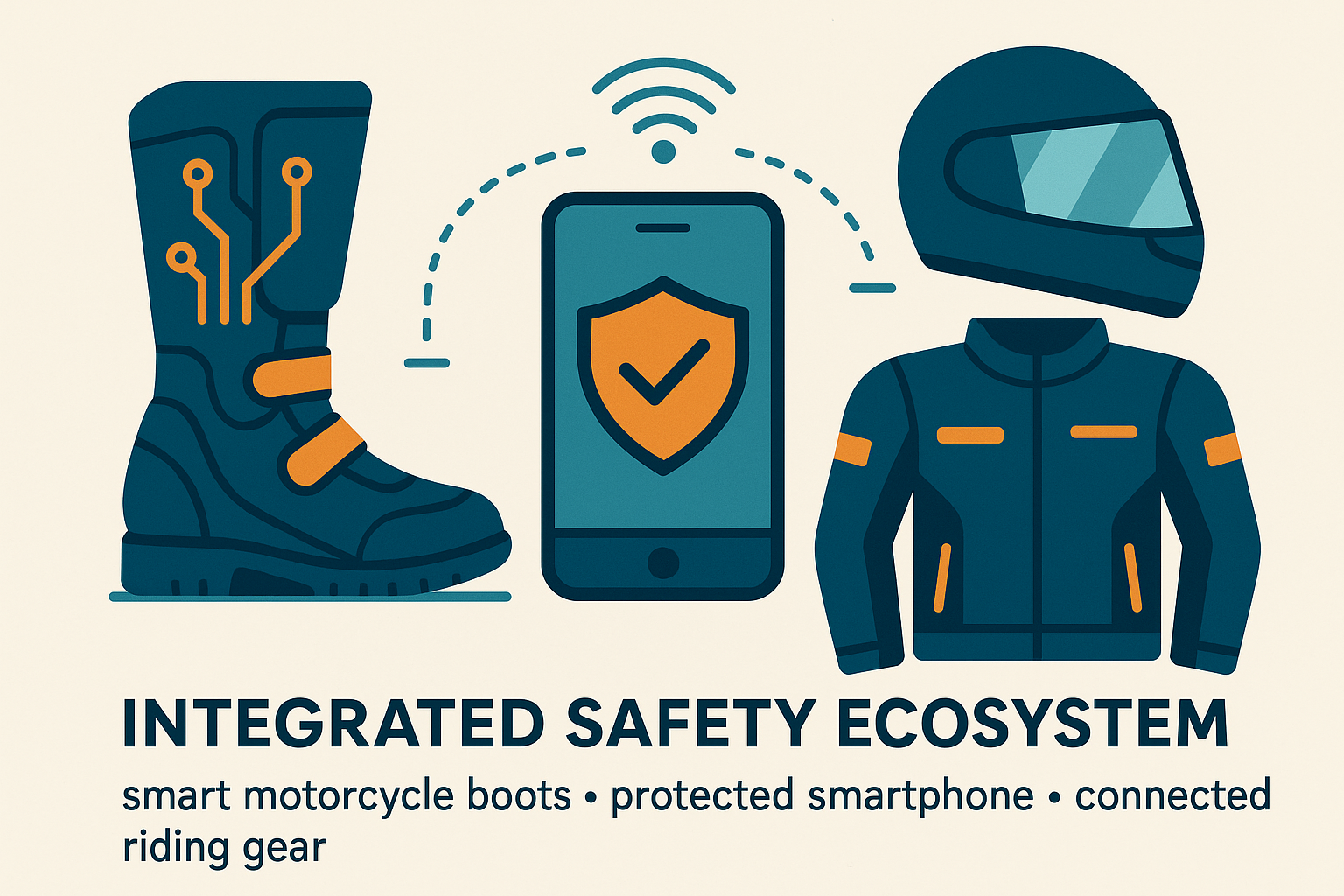
Final Thoughts
The evolution of motorcycle riding boots represents a fundamental shift in how we think about riding gear. We've moved from simple protection to sophisticated systems that enhance performance, adapt to conditions, and integrate with technology to create safer riding experiences.
Look, I'm not gonna sugarcoat it - good boots cost money. But here's why it's worth it: whether you choose traditional boots with advanced materials, street boots that hide in plain sight, or minimal motorcycle shoes, the key is understanding how your footwear choice affects your entire riding experience. Your boots are the foundation of your connection with your motorcycle, and investing in the right technology for your riding style pays dividends in comfort, safety, and performance.
For riders looking to complement their advanced footwear with other essential gear, exploring motorcycle riding tips can help maximize the benefits of your high-tech boots. Additionally, understanding how to choose the best first motorcycle ensures your entire riding setup works together harmoniously.
The future of motorcycle boots is already here - it's just a matter of choosing which innovations matter most for how and where you ride. Don't be the guy who spends $20K on a bike and $50 on boots. Your feet will thank you, your riding will improve, and you might just avoid being part of those sobering statistics we talked about at the beginning.

